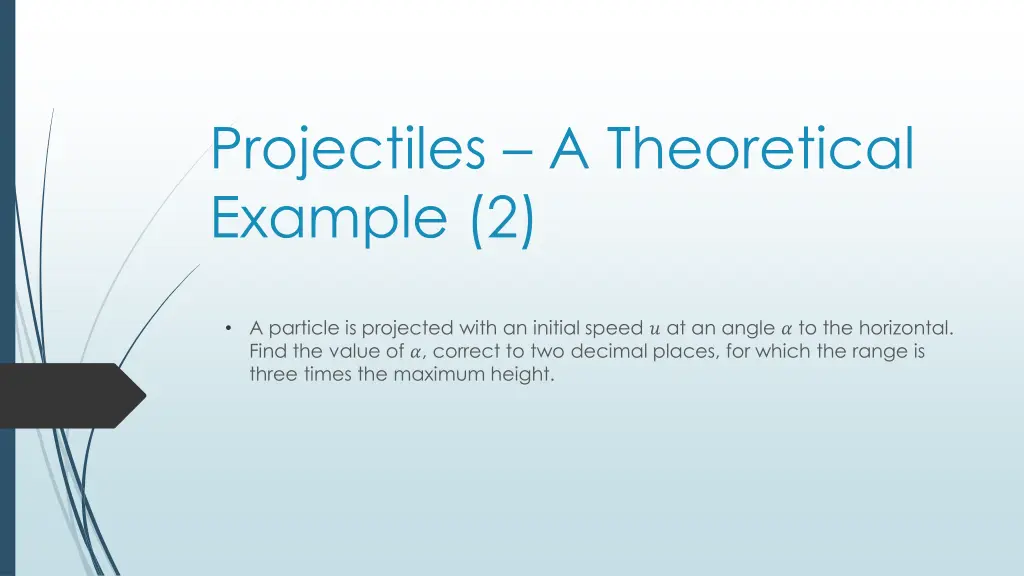
Projectile Motion: Finding Angle for Range Three Times Maximum Height
Learn how to find the angle at which a particle is projected to achieve a range three times its maximum height in projectile motion. Understand the concepts of theoretical range, time of flight, and maximum height to solve the problem effectively.
Download Presentation

Please find below an Image/Link to download the presentation.
The content on the website is provided AS IS for your information and personal use only. It may not be sold, licensed, or shared on other websites without obtaining consent from the author. If you encounter any issues during the download, it is possible that the publisher has removed the file from their server.
You are allowed to download the files provided on this website for personal or commercial use, subject to the condition that they are used lawfully. All files are the property of their respective owners.
The content on the website is provided AS IS for your information and personal use only. It may not be sold, licensed, or shared on other websites without obtaining consent from the author.
E N D
Presentation Transcript
Projectiles A Theoretical Example (2) A particle is projected with an initial speed ? at an angle ? to the horizontal. Find the value of ?, correct to two decimal places, for which the range is three times the maximum height.
Approach we need to be able to find the theoretical range (? ?at the time of flight) and maximum height (? ?when ? ?= 0). These are concepts you should be familiar with. To find the range we need to calculate the time of flight. This is found by letting ? ?= 0, and is exactly the same as we found in the first theoretical example. As mentioned in the previously, before we begin any projectiles problem we should note the initial speed of the particle is ?, and this needs to be expressed as the vector: ? = ????? ? + ????? ?.
Using the formula s = ?? +1 2??2: ? ?= 0 0 = ?????? ??2 0 = 2?????? ??2 we can factorise and solve for ?: 2 .apply a common denominator of 2: 0 = ? 2????? ?? 0 = ? .this is the time of projection or 0 = 2??in? ?? ?? = 2??in? ? =2????? this is the time of flight ? Range (?) is calculated by finding ? ?at the time of flight. Remember, there is no horizontal acceleration, so the formula s = ?? +1 2??2simplifies to ? ?= ??. ? = ?????? ? = ????? 2????? ? ? =2?2???????? .this is the theoretical range. ?
When an object reaches the maximum height, it is no longer travelling upwards or downwards. This means that ? ?= 0. Using the formula ?2= ?2+ 2??: 0 = ??in?2 2?? .solving for ?: 2?? = ?2???2? ? =?2sin2? this is the theoretical maximum height. 2? The question states the range is three times the maximum height. So: 2?2???????? ? = 3?2?in2? ..we can cancel a factor of ?2???? from both sides: 2? ? 2?os? =3???? 2 4???? = 3????
This equation is a little difficult to solve because there are two variables - ???? and ????. To overcome this, we make use of the identity ???? = ???? ????: 4 3= ???? ???? 4 3= ???? 4 3 ??? 1 = ? 53 13 = ?
